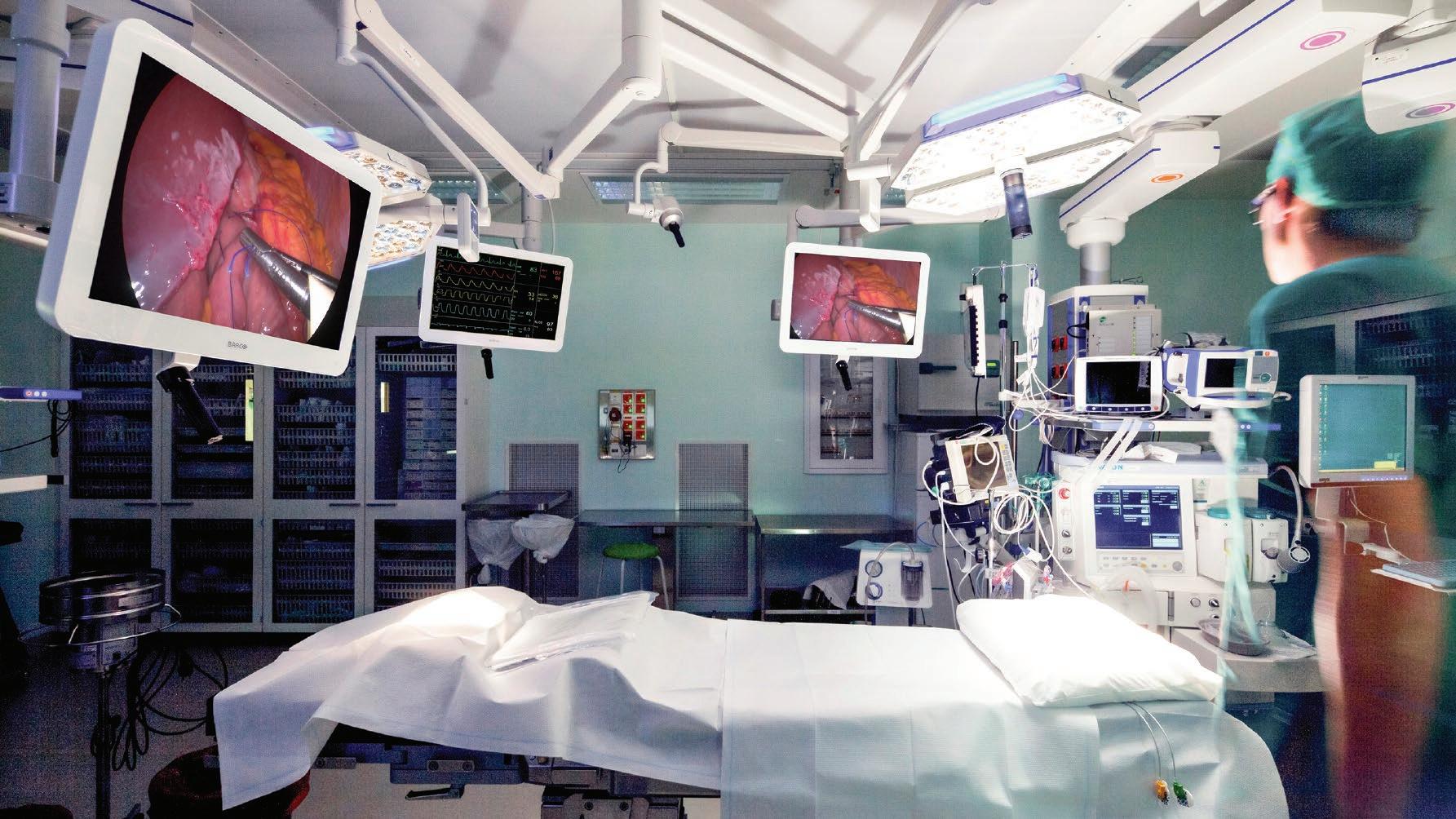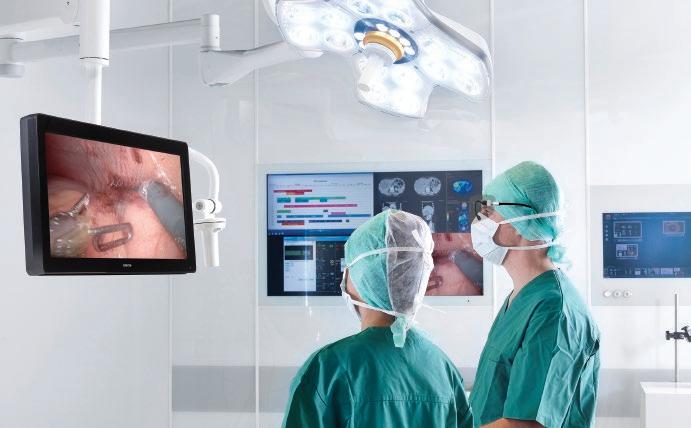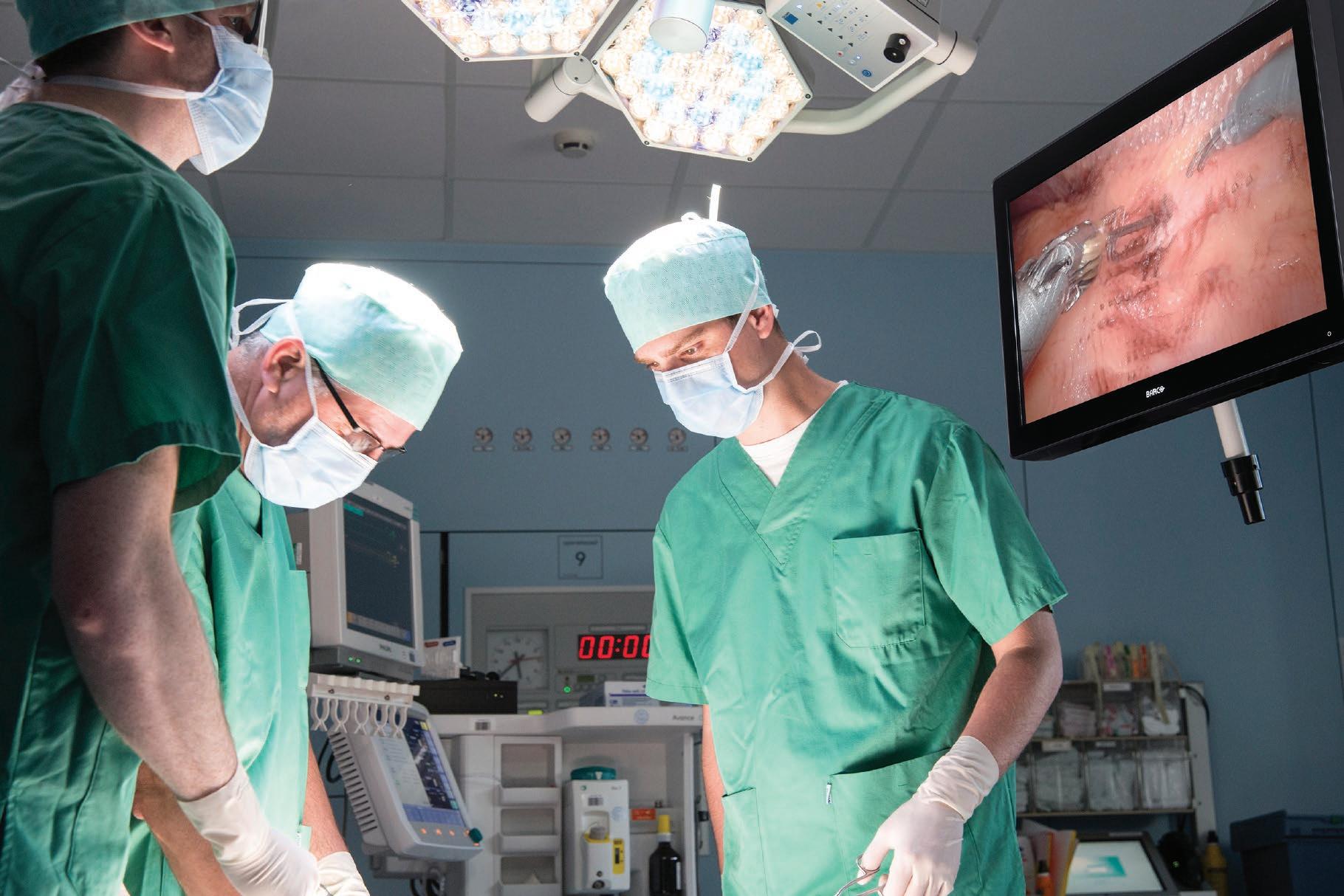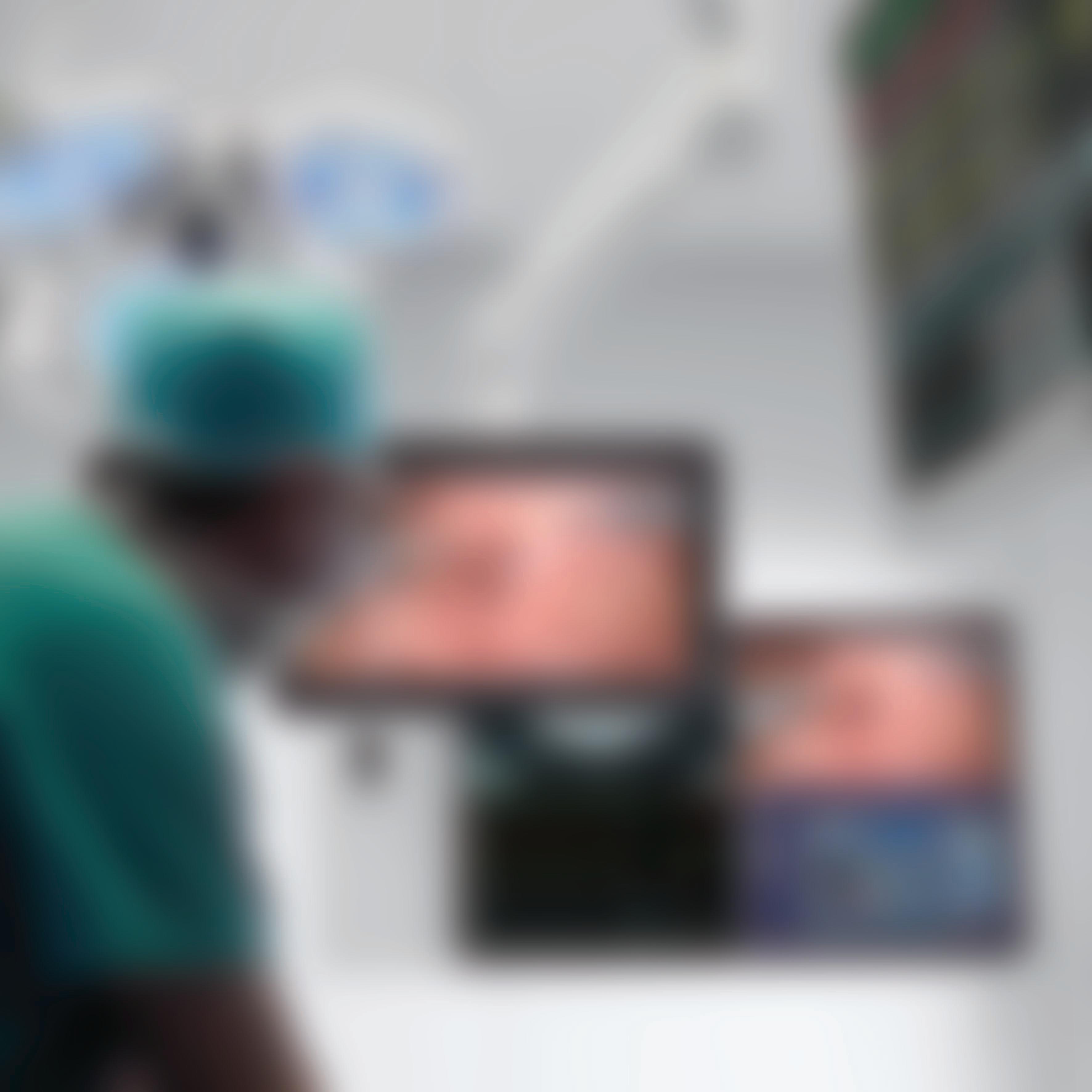IMPROVING OPERATING ROOM EFFICIENCY AND THE ROLE OF DIGITAL TECHNOLOGY
Equipping the Operating Theatre Camilla Slade, Staff Writer The risk that the quantity of equipment to help the patient will degrade the working environment
It seems logical to group the equipment into categories and try to address the issues separately from each component. However, all these groups of equipment are interconnected and they work in unison and harmony to produce a clear picture
10 | WWW.HOSPITALREPORTS.EU
In the previous article, John Hancock looked at digital technology with a brief view of some applications and at the application of, particularly, digital imaging in the operating theatre. But while the features of the technology are well known, why would any healthcare provider wish to introduce them to their processes?
The Challenge of Maintenance and Troubleshooting It isn’t that operating theatres don’t have everything needed to deliver image guided surgery, as we have already alluded to, but rather it is that the equipment needed, while it might well improve patient outcomes, does not always improve working conditions for the surgical team. With an increasing number of devices and cables, the operating theatre risks becoming a complex array of technology that is hard to maintain. Technicians not only have the task to increase the theatre’s uptime as much as possible, but the maintenance needs to be done efficiently as well. Time spent on technical maintenance cannot be used for surgery. And that complexity can be inflexible as well as the risk that the equipment available might not be exactly what the surgeon needs for the surgery at hand. We have already mentioned the need for surgeons to take their eyes away from the operating site in order to assimilate data from several different sources presented on several different displays. Similarly, with maintenance and troubleshooting, there are challenges that can arise even during a procedure. Some challenges faced in the operating theatre are revealed in Innovative Surgical Sciences9 paper, ‘Technical problems during laparoscopy: a systematic method of troubleshooting for surgeons’ which identifies, “The commonest source of problems when having trouble with laparoscopy equipment seem to be the scope, camera head, light cable, light source, insufflation tube and gas insufflator… It seems logical to group the equipment into categories and try to address the issues
separately from each component. However, all these groups of equipment are interconnected and they work in unison and harmony to produce a clear picture… We suggest a method of troubleshooting laparoscopic tower problems by categorising them into either image quality problems or insufflation problems.” One solution would be to use an IP (Internet Protocol) based video integration platform which will allow an array of inputs to have access to where the surgeon is working without filling the room with equipment and cables. That seems to be the way that the technology is now progressing.
What a Digitised Operating Environment Can Offer Pharma Times ‘Digitising the Operating Room with IP’10 offers a clue. “the NHS’ 2018 Operating Theatres Project Report… found that 13% of patients were having to wait over 18 weeks for surgery - the highest level since January 2009.” Healthcare is a sector under all sorts of pressures including the conventionally contradictory needs for speed (faster turnover of patients through the operating theatre) and quality (always important and the more so in these litigious times). As Pharma Times adds, “With pressure mounting on the health service, the need for greater operational efficiency is paramount and modern technologies promise a powerful solution. From the operating room (OR) and beyond, integrated solutions and IP (internet protocol, referring to methods used to share data between two or more devices) technology promise to streamline operations, transform conventional clinical spaces and subsequently strengthen standards of clinical care.” Forbes magazine 11 explained in 2019, “Surgeons and their teams have to continuously winnow through a clutter of images, vital signs data, and other patient indicators on a number of displays and 2D flat screens scattered across the operating room (OR). This often forces them






